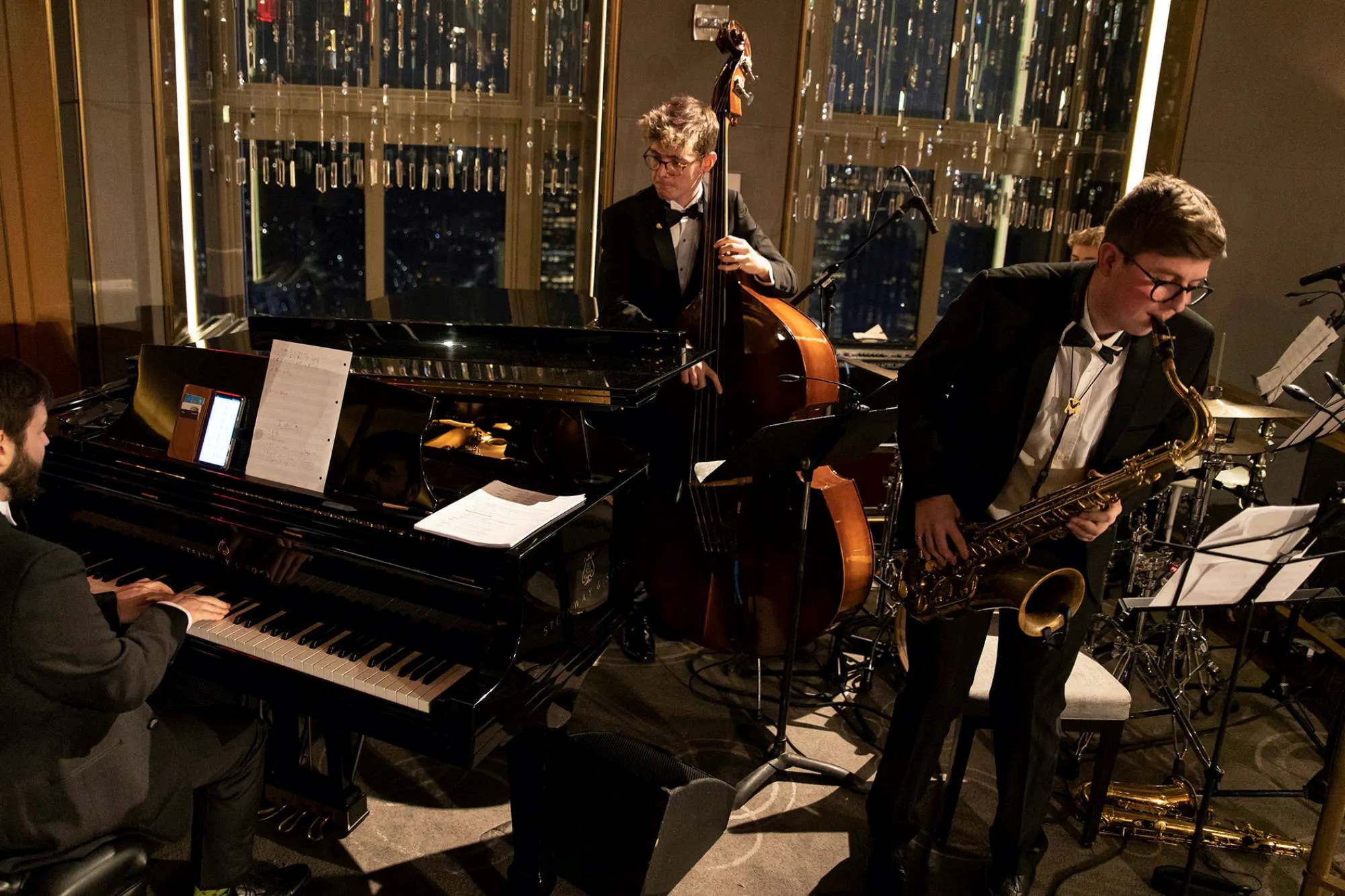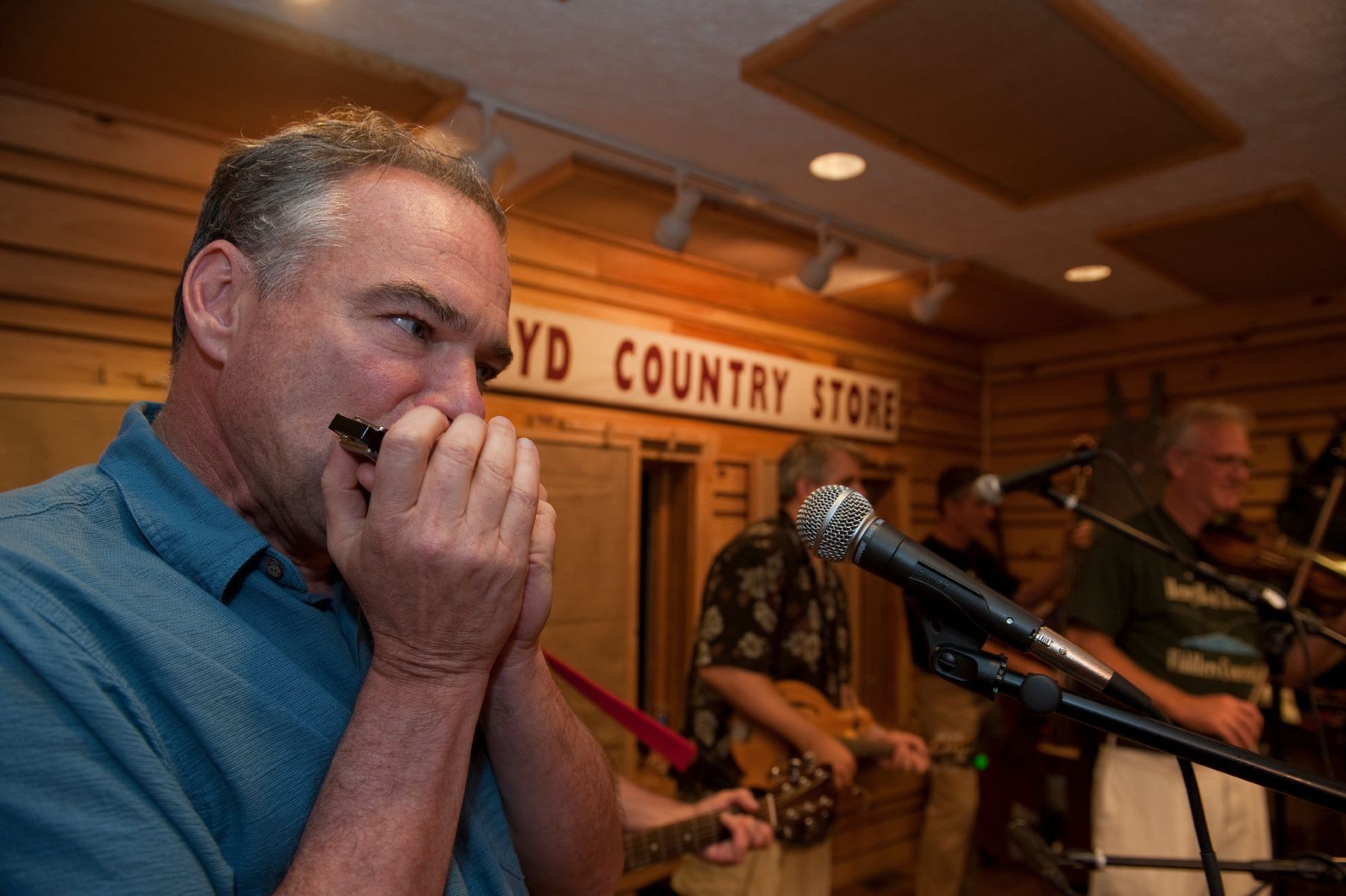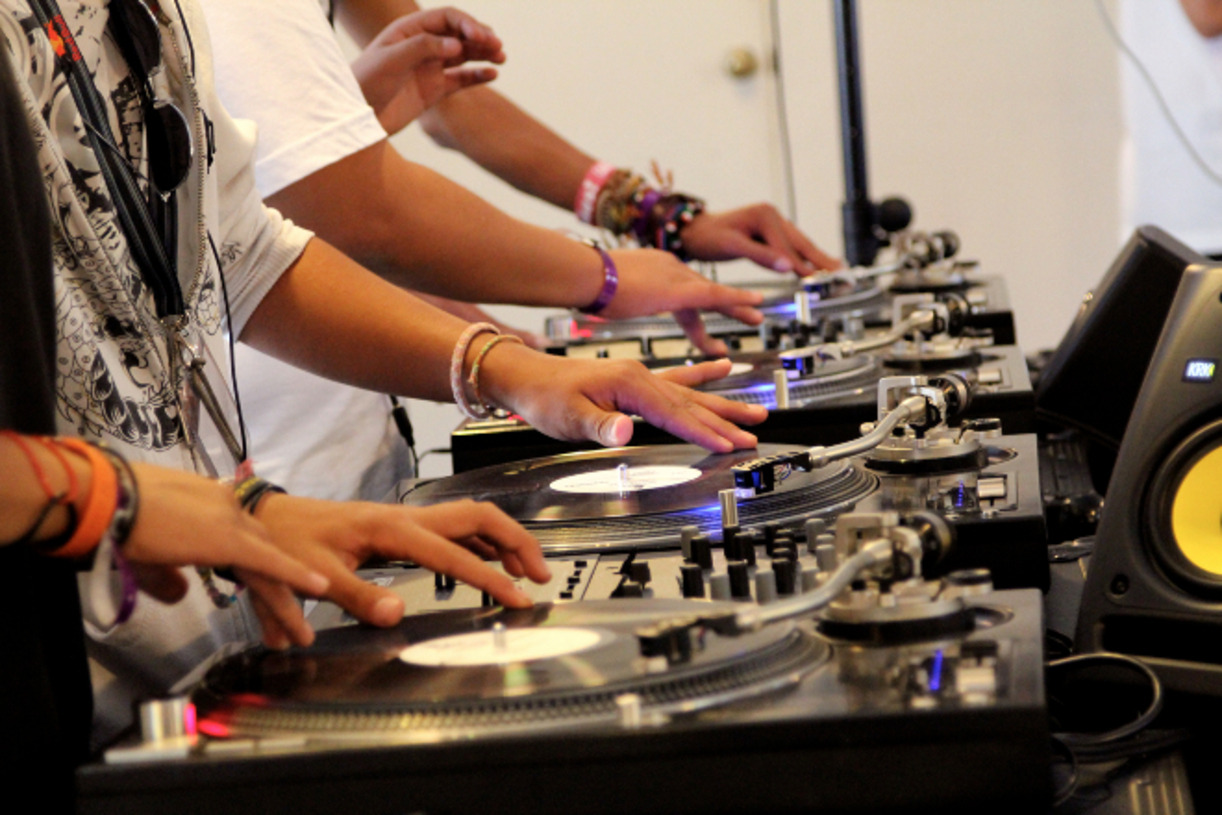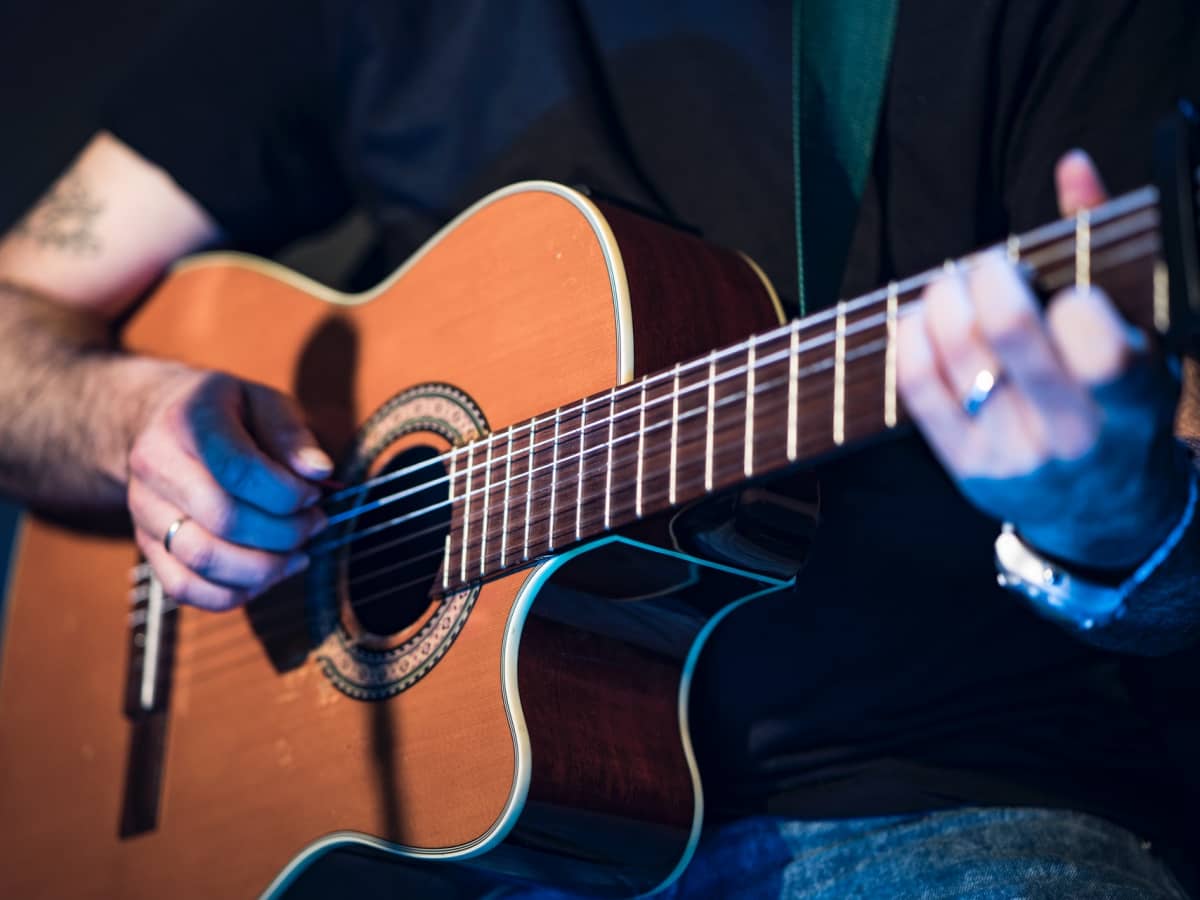

Jazz
How To Learn Jazz
Modified: January 29, 2024
Learn jazz with expert tips and techniques. Discover the art of improvisation and master jazz theory. Start your musical journey today!
(Many of the links in this article redirect to a specific reviewed product. Your purchase of these products through affiliate links helps to generate commission for AudioLover.com, at no extra cost. Learn more)
Table of Contents
- Introduction
- Understanding the Basics of Jazz
- Listening to Jazz: Developing an Ear for the Genre
- Learning Jazz Theory: Chords, Scales, and Progressions
- Mastering Jazz Techniques: Improvisation and Phrasing
- Studying the Greats: Analyzing Jazz Legends
- Building a Repertoire: Learning Jazz Standards
- Collaborating and Jamming: Playing with Other Musicians
- Jazz Education Resources: Books, Online Courses, and Workshops
- Conclusion
Introduction
Jazz is a genre of music that is often hailed as one of the most complex and sophisticated forms of musical expression. With its rich history and diverse styles, jazz has captivated audiences and musicians alike for decades. Whether you are a budding musician looking to explore a new musical genre or simply a jazz enthusiast wanting to deepen your understanding, this article will guide you on how to learn jazz.
Jazz originated in African American communities in the late 19th and early 20th centuries, drawing influences from African and European musical traditions. It evolved from a fusion of ragtime, blues, and early forms of dance music, and soon became a platform for innovation and self-expression. A key element of jazz is its emphasis on improvisation, allowing musicians to add their own unique voice to the music.
To truly appreciate and understand jazz, it is important to delve into its history, familiarize yourself with its key figures, and grasp the fundamental concepts that underpin the genre. This will provide a solid foundation for your journey in learning jazz.
In this article, we will explore various aspects of learning jazz, from gaining a deep appreciation for the genre through active listening, to studying jazz theory and techniques, and immersing yourself in the playing and collaboration with other musicians.
Whether you are a beginner just starting out or an experienced musician looking to broaden your musical horizons, this guide will provide you with the knowledge and resources to embark on your jazz journey.
Understanding the Basics of Jazz
Before delving into the intricacies of jazz, it is important to grasp the basic elements that define the genre. Jazz is characterized by its syncopated rhythms, complex harmonies, and improvisational nature. Understanding these core elements will help you appreciate the nuances of jazz music and enable you to develop your own improvisational skills.
One of the defining features of jazz is its emphasis on syncopation. Syncopation refers to the rhythmic displacement of beats within a musical phrase. It adds a sense of unpredictability and groove to the music, giving jazz its distinct swinging feel. As you listen to jazz recordings, pay close attention to the way the rhythm section interacts and how the melodies are phrased to better understand the syncopated nature of the music.
Harmony plays a crucial role in jazz as well. Jazz is known for its rich and complex chord progressions, often incorporating extended chords and altered tones. To understand the harmony in jazz, it’s helpful to gain a basic understanding of music theory, particularly chord structures and progressions. Learning about seventh chords, major and minor scales, and the circle of fifths will lay a strong foundation for understanding jazz harmony.
Furthermore, jazz is renowned for its improvisational nature. Unlike other genres where the music is predominantly written and performed as written, jazz musicians are encouraged to improvise and create their melodies and solos in real-time. This requires a solid understanding of scales, modes, and melodic patterns, as well as the ability to listen and react to the other musicians in the ensemble. Developing your improvisational skills is a key component of learning jazz, and it can be practiced through structured exercises and playing along with recorded jazz tracks.
By understanding the basics of jazz, including its syncopated rhythms, complex harmonies, and improvisational nature, you will be better equipped to appreciate and engage with the genre. Keep in mind that jazz is a vast and ever-evolving musical style, so approach your learning journey with an open mind and a willingness to explore different facets of the genre.
Listening to Jazz: Developing an Ear for the Genre
Listening to jazz recordings is an essential part of learning the genre. By immersing yourself in the music of jazz legends, you can develop a deeper appreciation for the unique nuances and styles within the genre. Here are some tips to help you develop an ear for jazz:
- Start with the classics: Begin your jazz listening journey by exploring the recordings of jazz pioneers such as Louis Armstrong, Duke Ellington, and Charlie Parker. These iconic musicians laid the foundation for the genre and their recordings provide a wealth of inspiration and insight.
- Explore different eras and styles: Jazz has evolved over the years, giving rise to different sub-genres and styles. From the swing era of the 1930s and 40s to the bebop revolution of the 1950s, and the fusion experimentation of the 1970s, each era has its distinct sound and characteristics. By listening to recordings from different eras, you can broaden your understanding of jazz and discover artists and styles that resonate with you.
- Analyze the music: As you listen, pay attention to the various elements of the music. Focus on the melodic lines, the improvisations, the interaction between the instruments, and the overall structure of the compositions. Take note of the rhythmic patterns, the harmonies, and the dynamics of the performances. This active listening approach will sharpen your musical ear and deepen your understanding of jazz.
- Attend live performances: While recordings provide a wealth of material, nothing compares to the experience of witnessing jazz music being performed live. Check local listings for jazz clubs, festivals, and concerts in your area. Watching and listening to musicians perform in a live setting will give you a deeper appreciation for the energy and spontaneity of jazz improvisation.
- Transcribe and analyze solos: Take the time to transcribe and analyze solos from your favorite jazz recordings. Transcribing involves listening to a solo and transcribing the notes and rhythms played by the musician. This exercise helps you understand the language of jazz improvisation and develop your own musical vocabulary. Analyzing solos will also give you insights into various melodic and harmonic concepts that jazz musicians employ.
Remember, developing an ear for jazz takes time and consistent listening. The more you immerse yourself in the music, the more you will start to recognize the different styles, techniques, and nuances. Over time, you will develop a deeper understanding and appreciation for the artistry of jazz.
Learning Jazz Theory: Chords, Scales, and Progressions
Understanding jazz theory is essential for any aspiring jazz musician. Jazz theory provides the framework for improvisation, chord voicings, and understanding the harmonic structure of jazz compositions. Here are the key elements to focus on when learning jazz theory:
- Chords: Jazz music is known for its complex and extended chord voicings. Start by learning the basic chord types, such as major, minor, and dominant seventh chords. Then, expand your knowledge to include extended chords like ninth, eleventh, and thirteenth chords. Practice voicings in different positions on the guitar or piano to familiarize yourself with their sound and fingerings.
- Scales: Jazz improvisation relies on scales as the foundation for melodic expression. Begin by mastering the major and minor scales, as well as the modes derived from them, such as the Dorian, Mixolydian, and Aeolian modes. Additionally, learn the melodic and harmonic minor scales, which are commonly used in jazz. Practice playing these scales in all twelve keys to develop muscle memory and fluency.
- Progressions: Jazz compositions often feature complex harmonic progressions. These progressions provide a roadmap for improvising and understanding the underlying structure of the music. Study common jazz progressions, such as the ii-V-I progression, which is ubiquitous in jazz. Analyze the relationships between chords and understand how to navigate through them in your improvisation.
- Harmonic Analysis: Analyzing jazz standards and transcribing solos will deepen your understanding of jazz theory. Study how chords function within a progression and how melody notes relate to the underlying harmony. This analysis will provide insights into the melodic and harmonic choices made by experienced jazz musicians, allowing you to incorporate these ideas into your own playing.
- Ear Training: Developing your ear is an integral part of understanding jazz theory. Train your ear to recognize chord progressions, intervals, and melodic phrases. Practice transcribing solos and melodies from jazz recordings to improve your ability to hear and replicate these musical ideas.
Learning jazz theory is an ongoing process, so be sure to dedicate regular practice time to these concepts. As your knowledge and understanding of jazz theory expand, you’ll find it easier to analyze and internalize the music, opening up new possibilities for improvisation and composition.
Mastering Jazz Techniques: Improvisation and Phrasing
One of the most captivating aspects of jazz music is the art of improvisation. Jazz musicians have the ability to create spontaneous and expressive melodies on the spot, adding their own unique voice to the music. To master jazz techniques, particularly improvisation and phrasing, here are some key points to keep in mind:
- Embrace the language of jazz: Jazz has its own vocabulary of melodic and rhythmic patterns. Immerse yourself in jazz recordings and transcribe solos from your favorite artists. This process will help you internalize the language of jazz and develop an understanding of its characteristic phrases and idioms.
- Learn melodic devices: Jazz improvisation often involves the use of various melodic devices such as enclosures, chromaticism, and arpeggios. Practice incorporating these devices into your own playing to add depth and complexity to your solos.
- Internalize the harmonic progressions: Understanding the chord progressions of jazz standards is crucial for improvisation. Memorize the common progressions and their related scales, and practice navigating through them. This will allow you to confidently improvise over different chord changes and create melodic lines that harmonically connect to the underlying chords.
- Develop good phrasing: Phrasing is the art of shaping and structuring your melodic lines. Pay attention to the rhythmic placement of your notes and experiment with different rhythms to create interesting and engaging solos. Use dynamics and articulation to add expressiveness and emotion to your playing.
- Use call-and-response: Incorporate call-and-response phrases in your improvisation. This technique involves creating a melodic line and then responding to it with a contrasting phrase. It adds a conversational quality to your solos and creates musical tension and release.
- Practice with backing tracks: Improvisation is best learned through practical experience. Utilize backing tracks or play along with recordings to simulate a live jazz performance. This will help you develop your improvisational skills, as well as your ability to interact with a rhythm section.
Remember, mastering jazz techniques is a lifelong journey. Dedicate regular practice sessions to developing your improvisation and phrasing skills, and continuously seek out opportunities to perform and collaborate with other musicians. The more you immerse yourself in the art of jazz improvisation, the more your personal musical voice will develop and flourish.
Studying the Greats: Analyzing Jazz Legends
One of the most effective ways to progress as a jazz musician is to study and analyze the work of jazz legends. These iconic musicians have made lasting contributions to the genre and have left a wealth of recordings and performances to learn from. Here are some key benefits of studying jazz legends:
- Understanding stylistic nuances: Jazz has evolved over the years, with each era and artist bringing their own unique style and approach. By studying the work of jazz legends, you can gain insight into different stylistic nuances, from the swinging melodies of Louis Armstrong to the intricate improvisations of Charlie Parker. Pay attention to the phrasing, tone, and rhythmic feel in their playing and strive to incorporate those elements into your own musical vocabulary.
- Developing improvisational language: Jazz legends have created memorable and influential solos that have become part of the jazz canon. Transcribing and analyzing these solos will expose you to a vast array of melodic and harmonic ideas. By studying their improvisational language, you can expand your own musical vocabulary and gain a deeper understanding of how to construct compelling solos.
- Learning from their compositions and arrangements: Many jazz legends were prolific composers and arrangers. Their compositions, such as Duke Ellington’s “Take the A Train” or Thelonious Monk’s “Round Midnight,” have become jazz standards. Analyzing their compositions and arrangements will give you insights into song structure, chord voicings, and harmonic progressions, which you can use to enhance your own compositions and arrangements.
- Gaining historical and cultural context: Jazz legends were not only musicians but also cultural icons who shaped the history of jazz and influenced popular culture. Studying their biographies and understanding the socio-cultural context in which they existed can provide a deeper appreciation for their music. Discovering their influences and the impact they had on subsequent generations of musicians will enrich your understanding of jazz as a whole.
- Fostering inspiration and motivation: Listening to the recordings and performances of jazz legends can serve as a constant source of inspiration and motivation. Their mastery of the art form and their ability to connect with audiences can fuel your own passion for jazz and keep you motivated on your musical journey.
As you study and analyze the work of jazz legends, remember to approach it with an open mind and a critical ear. Take the time to deeply listen and understand the nuances of their playing, and strive to incorporate what you learn into your own musical expression. By studying the greats, you’ll continue the tradition of jazz and forge your own unique path within the genre.
Building a Repertoire: Learning Jazz Standards
Building a repertoire of jazz standards is a crucial step in becoming a proficient jazz musician. Jazz standards are timeless compositions that serve as a common language for jazz musicians to communicate and collaborate. Here are some key points to consider when learning jazz standards:
- Choose a diverse selection of tunes: Jazz standards come in a variety of styles, tempos, and moods. Select a mix of ballads, bebop tunes, blues, and up-tempo swing numbers to create a well-rounded repertoire. This will help you develop versatility as a musician and allow you to adapt to different musical situations.
- Learn the melodies and lyrics: Start by learning the melodies of the selected standards. Familiarize yourself with the structure and form of each tune, paying attention to the nuances and phrasing. Additionally, some jazz standards have iconic lyrics, which can enhance your understanding of the song’s theme and provide inspiration for your improvisation.
- Understand the harmony: Jazz standards are built upon sophisticated chord progressions. Take the time to analyze the harmonic structure of each tune, identifying the key centers, chord changes, and any altered or extended chords. This knowledge will enable you to navigate the song’s harmony and improvise confidently.
- Transcribe and study recordings: Listening to multiple recordings of jazz standards performed by different artists will deepen your understanding of the music. Transcribe solos from your favorite recordings to study the improvisational language used by experienced jazz musicians. Pay attention to how they navigate the chord changes and interact with the rhythm section. This process will inspire your own improvisation and help you develop your personal style.
- Play with other musicians: Jazz is a highly collaborative art form, so it’s important to practice playing the standards with other musicians. Seek out opportunities to jam with fellow jazz enthusiasts or join a jazz ensemble. Playing in a group setting will develop your ability to communicate and interact musically, reinforcing your understanding of the repertoire.
- Expand and personalize: Once you have built a foundation of jazz standards, continue to add new tunes to your repertoire. Explore lesser-known compositions to expand your musical knowledge and challenge yourself. As you become more comfortable with the standards, incorporate your own personal touch and interpretation into your performances.
Learning jazz standards is an ongoing process. Start with a few tunes, gradually expanding your repertoire as you develop your skills and musical knowledge. By building a diverse and extensive repertoire, you will be well-equipped to participate in jam sessions, gigs, and other musical opportunities, allowing you to fully immerse yourself in the world of jazz.
Collaborating and Jamming: Playing with Other Musicians
Jazz is a collaborative art form that thrives on the interaction and improvisation between musicians. Playing with other musicians in a jam session or ensemble setting is not only a great way to develop your jazz skills, but also an opportunity to explore new musical ideas and build lasting connections. Here’s why collaborating and jamming with other musicians is essential in your jazz journey:
- Improving your listening skills: In a collaborative setting, listening becomes paramount. You need to actively listen to the other musicians to respond and interact with their musical ideas. This skill enhances your ability to communicate musically and adapt to different playing styles, rhythms, and dynamics.
- Developing your improvisational skills: Jam sessions offer you the chance to engage in spontaneous improvisation with other musicians. As you take turns taking solos and responding to each other’s playing, you’ll learn to navigate the chord progressions and explore new melodic ideas. This collaborative environment fosters creativity and pushes you to expand your improvisational vocabulary.
- Learning from others: Playing with more experienced musicians exposes you to new concepts, techniques, and musical approaches. Observe how seasoned musicians approach solos, comping, and ensemble playing. Embrace their mentorship and be open to learning from their musical insights and experiences.
- Building interpersonal connections: Collaborating with other musicians creates a sense of camaraderie and community. You’ll have the opportunity to network, make friends, and form connections that can lead to future musical endeavors. These connections may lead to gigs, workshops, or other opportunities to grow as a jazz musician.
- Developing ensemble skills: Jazz is often performed in groups, so learning to play as part of an ensemble is crucial. Collaborating with other musicians teaches you how to blend with different instruments, maintain proper balance, and contribute to the overall sound and feel of the music. It also hones skills like comping, trading solos, and navigating collective improvisation.
- Experimenting with different musical ideas: Jam sessions provide a platform for experimentation. They allow you to try new ideas, take risks, and push the boundaries of your musical comfort zone. Collaborating with other musicians encourages musical exploration and helps you evolve as a jazz artist.
Participate in local jam sessions, join jazz ensembles, or form your own groups to experience the joy of collaborative jazz playing. Embrace the opportunity to learn from others, share your musical ideas, and grow as a jazz musician through the power of collaboration.
Jazz Education Resources: Books, Online Courses, and Workshops
When it comes to learning jazz, there is a wealth of educational resources available to help you deepen your knowledge and improve your skills. Whether you prefer to learn through books, online courses, or workshops, these resources can provide valuable guidance and instruction to support your jazz journey. Here are some key resources to consider:
- Books: Jazz education books offer a comprehensive and structured approach to learning jazz theory, history, and technique. Look for titles written by respected jazz educators and musicians. Some recommended books include “The Jazz Theory Book” by Mark Levine, “The Real Book” (a collection of jazz standards), and “How to Improvise” by Hal Crook. These books cover a wide range of topics, from music theory to improvisation techniques, and provide exercises and examples to help you apply what you’ve learned.
- Online courses: The internet has made high-quality jazz education accessible to all. Online platforms like Coursera, Udemy, and JazzHeaven offer a variety of jazz courses taught by renowned jazz educators and performers. These courses cover a range of topics, from jazz improvisation and harmony to specific instrument techniques. Online courses provide the flexibility to learn at your own pace and often include video lessons, interactive exercises, and forums for student interaction.
- Workshops and masterclasses: Participating in jazz workshops and masterclasses allows you to learn directly from accomplished jazz musicians. These sessions provide invaluable opportunities to gain insights into their playing, ask questions, and receive personalized feedback. Many music schools, universities, and jazz festivals offer workshops and masterclasses that cater to musicians of all skill levels. Additionally, some professional musicians offer private lessons or group masterclasses, which can be arranged through their websites or by contacting their management.
- Transcriptions and recordings: Studying transcriptions of jazz solos is a valuable learning tool. By transcribing solos from jazz recordings, you can analyze the melodic and harmonic choices made by accomplished jazz musicians. Websites like iReal Pro and The Jazz Resource have vast collections of transcriptions to explore. Listening to jazz recordings is also crucial for developing your musical ear and understanding different jazz styles. Jazz radio stations, streaming services, and online platforms like YouTube offer a wide selection of recordings to listen to and study.
- Jazz camps and summer programs: Jazz camps and summer programs provide immersive and intensive learning experiences. These programs often feature renowned jazz performers and educators as instructors, offering workshops, ensemble playing, and performance opportunities. The collaborative environment and focused curriculum of jazz camps can accelerate your learning and provide a supportive community of fellow jazz enthusiasts.
Remember that these educational resources are valuable tools, but they should be supplemented with hands-on practice and performance. Incorporating a mixture of self-study through books and online resources with opportunities for in-person learning and collaboration will help you develop a well-rounded jazz education and propel your musical growth.
Conclusion
Congratulations! You have learned about the various aspects of learning jazz and how to embark on your journey as a jazz musician. By understanding the basics of jazz, developing an ear for the genre, mastering jazz theory and techniques, studying the greats, building a repertoire, collaborating with others, and utilizing jazz education resources, you have equipped yourself with the tools necessary to thrive in the world of jazz.
Remember that learning jazz is a continuous process that requires dedication, practice, and a passion for the music. Embrace the improvisational nature of jazz and allow your creativity to shine through. Immerse yourself in the recordings of jazz legends and contemporary artists, and analyze their playing to expand your musical vocabulary. Collaborate with fellow musicians and engage in jam sessions to sharpen your skills and grow as a collaborative musician.
Through your exploration of jazz, you will discover the rich history, diversity of styles, and endless possibilities for expression that make jazz such a revered and influential genre. Whether you aspire to be a professional jazz musician or simply want to deepen your appreciation for jazz, the journey is rewarding and fulfilling.
So, pick up your instrument, listen to the masters, practice diligently, and embrace the joy of jazz music. Keep exploring, learning, and striving for musical excellence. Jazz is an ever-evolving art form, and by immersing yourself in it, you become part of its rich tradition and contribute to its ongoing legacy. Enjoy your jazz journey and let the music guide you!











